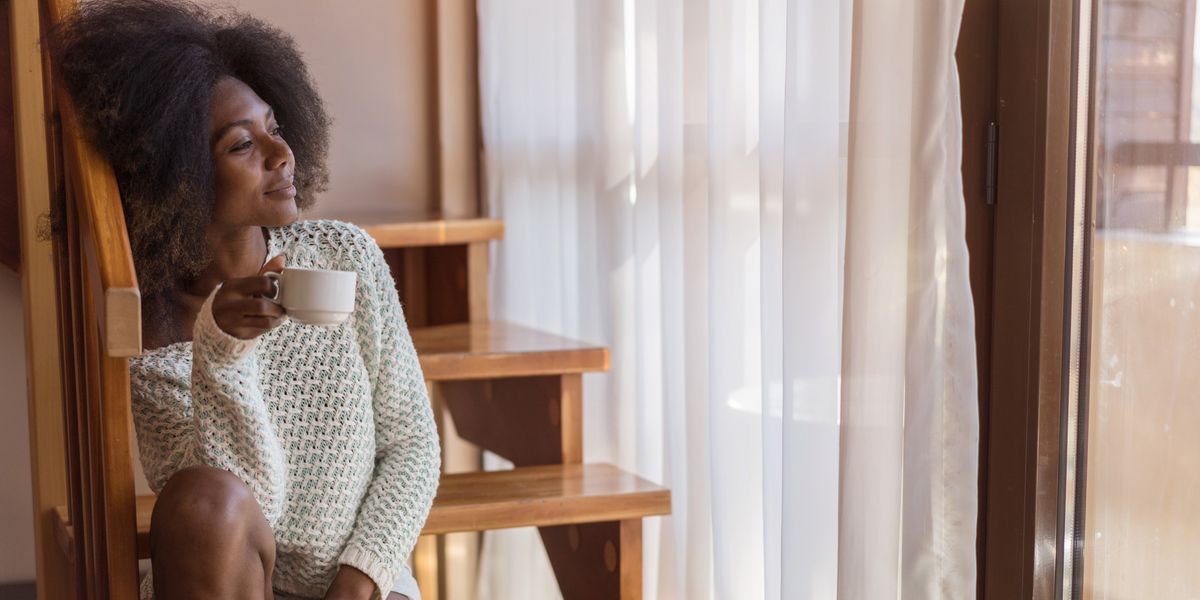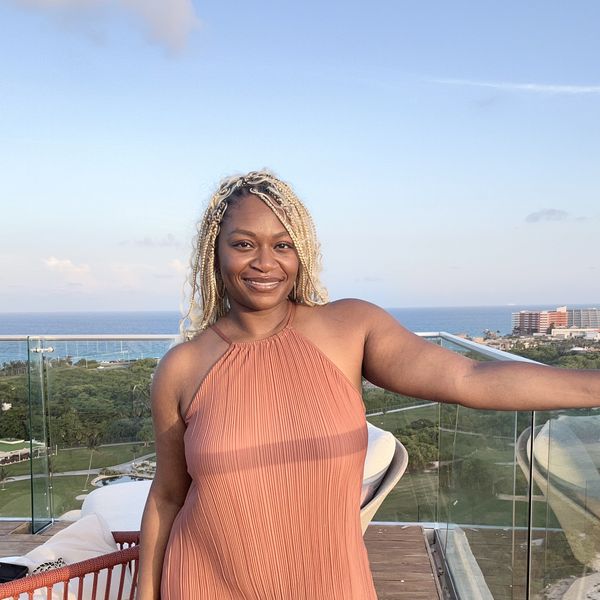
6 Must-Have Healing Crystals To Protect The Energy & Vibes Of Your Space
Whether you are looking for more protection in the home, more love in your spaces, or looking to attract more abundance into your life, there is a crystal for everything. Keeping crystals in the home not only elevates the aesthetic but also provides unique healing powers to your environment. Crystals and gemstones and their use of them go back thousands of years, and the wisdom of these natural gifts from Mother Earth has been passed down. In today’s time, crystals are more widely recognized and used, and it’s important to consider which crystal does what and the best place to put your most precious gemstones.
Your home is one of the most, if not the most, intimate spaces in your life. Having the right energy in the home translates into your experience when you leave it, and working with crystals can help you elevate your energy. Spiritual practices like feng shui prove how valuable and healing making every space in the home intentional is. By understanding the different healing properties and benefits of certain crystals, you can enhance the energy in your home, protect your space, and attract more positive energy into your life.
Consciously work with your space and with the bounty this earth provides, and create abundance and protection in your life. Each space in the home can benefit from a certain crystal, read below to see what your space may need right now.
1.Black Tourmaline
Black Tourmaline is a must-have for any crystal collection. This is a highly sought-after stone for its protective and healing benefits. Black Tourmaline is a good stone to place by the front door or in any area of the home where you feel you need extra protection. It’s good to put it near the front door because any energy that enters the home will be immediately cleansed before it comes in, protecting your home space.
Black Tourmaline acts as an energetic sponge, and it absorbs all negative energy in the home and transmutes it into positive, which is why it’s good to have it right before you enter into a space. This crystal will need to be cleansed often, so make sure you leave it out for the night during a Full Moon every month.
2.Spirit Quartz
Spirit Quartz is unique in its healing properties because a lot of it comes from the shape of the quartz itself. Spirit Quartz is a crystal with many facets pointing in different directions, and its different crystal points send out positive energy in different directions in the home. Place this crystal in the center of your home, table, or room to make sure positive and harmonious energy is flowing through without.
Spirit Quartz elevates the room and keeps the good vibes and nurturing energy flowing. This is a stone that will open up the energy in the room, keep things exciting, and create a safe space for everyone to be their authentic and best selves.
3.Amethyst
Amethyst is another must to have in the home and any crystal collection, but it’s especially a must if you have trouble sleeping, relaxing, emotionally healing, or with addiction. Amethyst is a good stone to put in the room or meditation space, and if you are having trouble sleeping, place it under your pillow or under your bed.
Amethyst Quartz is a truly unique and healing stone and provides an energy of transmutation, spiritual growth, and support. This is a crystal that you’ll want to place in areas where you want to create a relaxing, rejuvenating, and emotionally healing vibe. Keeping Amethyst in your home is like having an air purifier; it cleanses, heals, and rejuvenates.
4.Iron Pyrite
Iron Pyrite is a good crystal to keep in the office, near the bills, or next to/in your purse. Iron Pyrite is a stone of abundance, and it also acts as a protection stone for that which you want to protect and cherish in your life. This is the type of stone you want around you if you are looking to create more wealth in your life or protect the wealth you already have.
Iron Pyrite crystal will send you in the right direction financially and will bring up new ideas to help you create abundance and attract it into your life as well. This is a good stone to help you protect your finances and assets, so keep it where you want to protect your money, on top of any contracts you need to sign, on your business cards, in your safe, etc.
5.Rose Quartz
Rose Quartz is a more obvious crystal for the home, and this is a crystal you may already have that you can use. Rose Quartz is a crystal of love and is perfect for any intimate environment. Keep this crystal in the bedroom to spice things up, or keep it in the living room space to invite more love into your world. Rose Quartz is the stone of emotional balance and harmony, and it creates peace and a harmonious atmosphere.
It not only benefits your relationships and love life, but it’s also a facilitator of self-love and confidence as well, helping you grow in your journey here. If you struggle with insecurities, place Rose Quartz in the bathroom next to your mirror for some extra love in the mornings.
6.Green Aventurine
Green Aventurine is a good stone to keep in the home because it benefits many different areas of your life. You can place Green Aventurine in the garden or backyard to help plants grow and bring luck to the garden. Green Aventurine is a stone that brings your seeds of intention to fruition. This is another crystal of abundance as well and works well near the front door or window to help bring abundance in.
Green Aventurine also enhances good health and a healthy heart, making this a beneficial stone to have anywhere in the home. Overall, this is a stone that will help you attract positive, healthy, and refreshed energy into your life. This stone calls you to your inner harmony and health.
Let’s make things inbox official! Sign up for the xoNecole newsletter for daily love, wellness, career, and exclusive content delivered straight to your inbox.
Featured image by Mixmike/Getty Images
Tayler Barakat is a Mystic who has studied Astrology for over a decade. She does intuitive astrology and tarot readings for people all over the world, and her work focuses on healing and empowering individuals. Follow her on Instagram @taylerbarakat_ and check out her website www.listentothevirgo.com.
This article is sponsored by Hulu.
UnPrisonedhas returned for its highly anticipated second season, delving deeper into the complex dynamics of the Alexander family.
The series premiere comes a year after its debut season garnered rave reviews from fans and critics and earned record-breaking ratings for Hulu's Onyx Collective brand. UnPrisoned's success can be attributed to its raw, relatable themes and comedic appeal.
Inspired by creator Tracy McMillan's life, the show follows Paige (Kerry Washington), a therapist and single mother whose life takes an unexpected turn when her father, Edwin (Delroy Lindo) --who was released from prison-- moves in with her and her teenage son, Finn (Faly Rakotohavana).
Throughout UnPrisoned's first season, viewers witnessed how Edwin's incarceration deeply affected Paige's life and relationships. In the series, Paige unpacks her trauma through interactions with her inner child and her online followers. Meanwhile, Edwin is overcoming specific struggles with his own past that led to his life of crime, including a dysfunctional upbringing and his mother's arrest. As the Alexanders attempt to reconcile, new challenges arise.
This new season promises to further explore their unconventional family dynamic. Here are several compelling reasons why season two of UnPrisoned should be on everyone's watchlist.
The Alexander Family Life Is Still In Shambles
UnPrisoned's second season resumes where the series left off, with Paige grappling with the fallout from her troubled therapy practice and Edwin navigating life independently after moving out. Meanwhile, Finn faces his own challenges. The teenager is battling anxiety and seeking information about his father—a topic Paige avoids discussing.
The Alexander Family Are Attending Therapy To Resolve Their Underlying Issues
Amid the chaos in their lives, the Alexander family decides to mend their bond by confronting their past traumas. They seek professional help and attend therapy sessions with a “family radical healing coach,” played by John Stamos, a new cast member. This collective effort aims to unravel the complexities of their shared history and strengthen their relationships.
The process of unraveling each character's internal conflicts and their potential impact on future relationships may clash with Paige's textbook therapy approach. While Paige is used to being in the therapist's seat in both career and family, this forces her into the unfamiliar role of a patient during therapy sessions. This shift would compel her to look in the mirror and try a radically different approach.
The Alexander Family Learned A Big Lesson During A Therapy Session
In therapy, the Alexanders are tasked with addressing their individual traumas to salvage their remaining relationships. One of the family therapist’s eccentric suggestions was an exercise involving a family wrestling match. During this session, Paige faces tough questions about her refusal to share information about Finn's father.
While it's unclear whether this scene is reality or fantasy, the image of the family duking it out in the ring certainly makes for hilarious yet compelling television.
Paige Tries Dating Again Following Failed Relationships
Amid her life's chaos, Paige decides to step back into the dating field. However, her many attempts have left her with mixed results. The dating apps have turned out to be a fail, and an outing with her ex Mal (Marque Richardson), who is also her father's parole officer, doesn’t go quite as expected after he brings an unexpected guest – his new girlfriend.
The situation takes an awkward turn when Mal's new partner learns why the former couple split, partly due to Paige's self-sabotage.
UnPrisoned Is A Perfect Balance Of Comedy And Drama
As a dramedy, UnPrisoned takes a comedic approach to its heavy subjects. The show takes us on a ride with Paige's dating misadventures and navigating a friendship with her ex.
Other lighthearted moments include Edwin's attempts at CPR based on online videos and, of course, the antics of the Alexander family's unconventional new healing coach.
The second season of UnPrisoned is now available on Hulu.
UnPrisoned | Season 2 Trailer | Hulu
Feature image courtesy
Laz Alonso On His 'The Boys'' Character's Weight Loss And The Secrets To His New Physique
Actor Laz Alonso has unveiled the inspiration behind his dramatic 40-pound weight loss and shared insights on how he maintains his new physique through a balanced diet and consistent exercise routines.
The 50-year-old's transformation became a hot topic when fans noticed a significant change in his appearance during the new season of Amazon Prime's The Boys. In the hit series, Alonso portrays Marvin T. Milk, also known as Mother's Milk, an operations coordinator turned leader of The Boys—a group of vigilantes fighting against corrupt superheroes.
Throughout the first three seasons of The Boys, Alonso maintained a bulky appearance through weight training and high-intensity interval workouts to portray his character accurately, as described in the comics. However, during the third season, the actor reached his heaviest weight, primarily due to consuming high-calorie meals. In an interview with Men's Health magazine, Alonso revealed that his weight loss was influenced by his appearance in the third season of The Boys and the show's official poster. Knowing his character would undergo a transition due to becoming the leader of The Boys and working alongside the CIA, Alonso decided to change his appearance to fit this new narrative.
Laz’s Diet And Workout Routine
The Jumping the Broomstar's diet focused on lowering his caloric intake by eating whole foods and limiting processed foods. To further maintain his regimen, Alonso reduced his lactose consumption by making his own cashew and coconut milk while also incorporating nuts as snacks.
For his workout routines, the Avatar star begins his mornings on a trampoline to wake up his body, followed by a session in the sauna. After consuming electrolyte water and a high-protein breakfast of egg whites and rice porridge, Alonso heads to the gym. His typical routine focuses on weight lifting, but he incorporates high-intensity interval workouts when preparing for his role in The Boys.
Laz On Why He Eats Healthy
Also, in the interview, Alonso reveals that he maintains a balanced diet while working on The Boys during 15-hour workdays. He does this because once filming wraps, he lacks the energy to train intensely.
“Working on set is tough. I mean, especially on our show. Eric Kripke is a perfectionist. That means we’re working 14-15 hour days. We’re doing every single camera angle. This guy doesn’t mess around. But the proof is in the pudding. But it’s tough to work out and eat healthy during production. So I try my best to eat as healthy as possible because once I wrap I don’t have the energy to work out,” he said.
Laz On The Difficulty On Maintaining His Diet
When asked whether maintaining his diet or workout routine was more challenging, Alonso immediately responded, "diet." The actor explained that the difficulty stems from the discipline required, mainly when the cast and crew are provided with snacks and comfort foods on set.
“The diet, hands down. Because the diet involves discipline. The workout, I enjoy working out. Working out for me is my favorite pastime, stress reliever. “ It’s therapy, he stated. “But diet is what really you know cause on set they’re constantly making snacks to keep the crew going so that you don’t feel the 14 hours. Your body craves it when it’s like 20 [degrees] below outside, and you’re shooting in the snow. You want some comfort so that part becomes hard.”
While Alonso follows a well-balanced diet and workout routine most of the time, he still enjoys a variety of foods. Through his regimen, he has learned to practice moderation.
Let’s make things inbox official! Sign up for the xoNecole newsletter for love, wellness, career, and exclusive content delivered straight to your inbox.
Feature image by Robin L Marshall/WireImage









